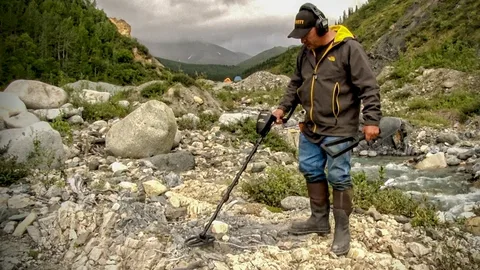Mining industries in Canada play a significant role in the country’s economy, contributing to both job creation and wealth generation. As technology and global demands continue to evolve, it is essential to explore the future of these industries to ensure sustainable and prosperous growth. In this article, we will delve into the trends and advancements that are shaping the future of mining in Canada, and the potential opportunities and challenges that lie ahead. By examining the current landscape and potential developments, we can gain valuable insights into what the future holds for mining industries in Canada.
Exploring the future of mining industries in Canada involves understanding the challenges and opportunities in the sector. This includes looking at technological advancements, environmental sustainability, and the evolving global market for minerals and resources. Additionally, it involves considering the impact of regulations and policies on the industry, as well as the potential for innovation and growth. Understanding these factors will be crucial in shaping the future of mining in Canada.
The Role of Mining Industries in Canada’s Economic Growth

The mining industry has been a significant contributor to Canada’s economic growth for many years. Canada is one of the world’s leading mining countries, with extensive mineral resources including gold, silver, copper, and many others. The industry has provided employment opportunities for many Canadians and has been a key driver of economic development in various regions of the country.
The mining industry has also played a crucial role in supporting other sectors of the economy, such as manufacturing and infrastructure development. Additionally, the industry has contributed significantly to Canada’s export earnings, with mineral products being among the top exports for the country.
Moreover, the mining industry has made substantial investments in research and development, leading to technological advancements and innovation in mining processes and equipment. This has not only improved the efficiency and environmental sustainability of mining operations but has also contributed to Canada’s reputation as a global leader in responsible mining practices.
Overall, the mining industry has been a major force in Canada’s economic growth, providing valuable resources, employment, and opportunities for economic development. Its continued success will likely be pivotal to the country’s future economic prosperity.
Sustainable Practices in Canada’s Mining Industry

The Canadian mining industry has made significant strides in adopting sustainable practices in recent years. This has been driven by a combination of government regulations, consumer demand, and a genuine desire to minimize the environmental impact of mining operations. Some of the key sustainable practices being adopted in the industry include:
1. Environmental Impact Assessment (EIA): Prior to the development of a new mining project, companies are required to conduct an EIA to assess the potential environmental impact of the proposed operation. This process helps to identify and minimize any potential negative effects on the surrounding ecosystem.
2. Reclamation and Remediation: Mining companies are increasingly taking responsibility for reclaiming and remediating land that has been disturbed by mining activities. This may involve restoring natural habitats, mitigating water pollution, and rehabilitating the land for future use.
3. Energy Efficiency: Energy consumption in mining operations is a significant concern, and companies are implementing measures to improve energy efficiency and reduce greenhouse gas emissions. This can include investing in renewable energy sources, optimizing equipment usage, and improving overall operational efficiency.
4. Water Conservation: Mining operations often require large amounts of water, and companies are implementing measures to reduce water consumption and minimize the impact on local water resources. This can involve recycling and reusing water, implementing water treatment technologies, and employing water conservation strategies.
5. Indigenous and Community Engagement: Sustainable mining practices involve meaningful engagement with Indigenous communities and local stakeholders. This includes respecting traditional land use, providing economic opportunities, and ensuring that communities benefit from mining activities.
Overall, the Canadian mining industry is committed to ongoing improvements in sustainability, with a focus on reducing environmental impact, conserving natural resources, and engaging with Indigenous and local communities.
Challenges and Opportunities in Canada’s Mining Sector

Challenges in Canada’s mining sector include environmental regulations, indigenous land rights, and the need for infrastructure development in remote areas. These challenges can lead to delays and increased costs for mining projects. Additionally, fluctuating commodity prices can impact the profitability of mining operations.
Opportunities in Canada’s mining sector include the country’s vast mineral reserves, skilled workforce, and strong mining technology and services industry. Canada’s stable political and regulatory environment also makes it an attractive destination for mining investment. The growing demand for minerals and metals, particularly in industries such as renewable energy and electric vehicles, presents opportunities for growth in the mining sector.
The Impact of Mining Industries on Canada’s Indigenous Communities

The impact of mining industries on Canada’s indigenous communities has been a contentious issue. While the industry has provided economic opportunities for some indigenous peoples, it has also resulted in environmental degradation, loss of traditional lands, and negative health impacts for many communities.
Mining activities have led to the destruction of natural habitats, contamination of water sources, and disruption of traditional ways of life for many indigenous groups. This has resulted in a loss of cultural heritage and has led to many social and health problems within these communities.
The Canadian government has been working to address these issues through the implementation of laws and policies aimed at protecting indigenous rights and the environment. However, the impact of mining industries on indigenous communities continues to be a significant issue that needs to be addressed through meaningful engagement and consultation with affected communities.
Efforts to mitigate the negative impact of mining on indigenous communities include the implementation of impact and benefit agreements, environmental assessments, and the inclusion of indigenous perspectives in decision-making processes. However, much work still needs to be done to ensure that indigenous communities are not disproportionately affected by mining activities and that their rights are adequately protected.
Innovation and Technology in Canada’s Mining Industry
Canada’s mining industry has been a leader in innovation and technology, with advancements in areas such as autonomous vehicles, digital mining platforms, and environmental sustainability. The adoption of advanced technologies has helped improve productivity, safety, and efficiency in mining operations. Furthermore, the industry has also been investing in research and development to drive further innovations in areas such as remote sensing, data analytics, and robotics. Additionally, Canadian mining companies have been at the forefront of implementing sustainable practices, leveraging technologies to reduce their environmental footprint and mitigate climate change impacts. Overall, innovation and technology continue to play a crucial role in shaping the future of Canada’s mining industry.
Regulatory Frameworks for Mining Industries in Canada
Regulatory frameworks for the mining industry in Canada are established and enforced at both the federal and provincial levels. The main federal regulatory body for mining is the Natural Resources Canada, which oversees the industry through the Canadian Minerals and Metals Plan.
At the provincial level, regulations are usually managed by ministries or departments responsible for natural resources, such as the Ministry of Energy, Mines and Petroleum Resources in British Columbia.
These regulatory frameworks typically cover a wide range of issues, including environmental protection, health and safety, land use and indigenous rights. Companies operating in the mining industry are required to comply with these regulations and obtain permits and approvals before starting any mining activities.
Additionally, Canada has a strong reputation for having stringent environmental and social responsibility standards within its mining industry, which sets the country apart as a responsible and reliable source of minerals and metals on the global stage.
Exploring the Future of Canada’s Mining Industry
See also: gold mining machinery
Exploring the Future of Canada’s Mining Industry involves examining various factors such as technological advancements, environmental sustainability, Indigenous engagement, and global market trends. It also requires considering potential challenges and opportunities for the industry, as well as the impact of government policies and regulations. Additionally, it involves discussing potential strategies for innovation, diversification, and long-term growth in the sector.
Investment Trends in Canada’s Mining Sector
Investment trends in Canada’s mining sector have fluctuated in recent years due to multiple factors. The industry has seen a decrease in investment as a result of environmental concerns, regulatory changes, and market volatility. Additionally, the global decline in commodity prices has also impacted investment in the sector. However, there has been a recent uptick in investment as the demand for minerals and metals, such as lithium and cobalt, has increased due to their use in renewable energy technologies. This has led to a renewed interest in Canadian mining projects and potential investment opportunities. Overall, the investment landscape in Canada’s mining sector is influenced by various economic, environmental, and geopolitical factors.
Environmental Responsibility in Canada’s Mining Industry
The Canadian mining industry has made significant strides in embracing environmental responsibility. This includes implementing sustainable mining practices, minimizing environmental impacts, and promoting responsible resource development. Key initiatives include adopting stringent regulatory frameworks, investing in advanced technologies for environmental monitoring and rehabilitation, and engaging with Indigenous communities to ensure sustainable development. Additionally, the industry has been actively involved in corporate social responsibility programs, such as community engagement, education, and environmental stewardship. Overall, the Canadian mining industry’s commitment to environmental responsibility reflects a growing awareness and dedication to sustainable development.
The Global Influence of Canada’s Mining Industry
Canada’s mining industry holds significant global influence due to its history of large-scale production and exportation of various minerals and metals. The country is a leading producer of gold, silver, nickel, copper, zinc, and other resources, and its mining companies operate on an international scale. Canada’s mining industry also maintains a strong reputation for adhering to rigorous environmental and labor standards, which further enhances its global influence. Additionally, the industry plays a crucial role in supporting the Canadian economy and providing employment opportunities for a significant portion of the population. This combination of factors has established Canada as a major player in the global mining sector, with its companies and resources impacting markets and supply chains around the world.